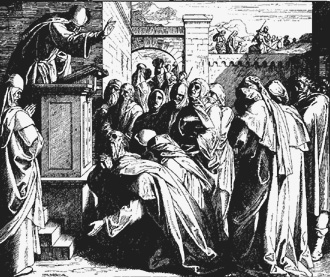
Where does one begin a course in Hebrew narrative? One could move in canonical order. This is the more typical strategy. David Carr takes a very different strategy. His book The Formation of the Hebrew Bible begins with the Hasmonean period as the historical context for the final form of the Bible. His methodological principle is that we know more about the material. Carr proposes that there were periods that generated new material that eventually and others that were more characterized as ages of collection and codification. We will not begin with the Hasmonean period but rather the Persian period. The materials of Ezra and Nehemiah reflect the attempt for a community to re-appropriate the scribal teachings of earlier periods.
Rolf Rendtorff argues that the reading to the Torah before the Water Gate described in Nehemiah 8 as the beginning of the Pharisee movement. I would add that the Pharisee movement is the seedbed of both modern Judaism and Christianity. So that is where we will begin.
Why there? The Jewish believers of the Persian period have something in common with the Jewish and Christian believers of today, a changing world empire worldview. The post-modern world means the end of the Constantinian hegemony that has favored Christianity for hundreds of years. Constantinianism argued that the Judeo-Christian ethos was the cornerstone of Western culture. Now Judaism and Christianity have the challenge and opportunity to find a way to be faithful in a world that has come of age.
Nehemiah 8 “And all the people gathered as one person … “This day is holy to the LORD our God; do not mourn or weep.” Last year Sarah Miller a student reflected on this theme of unity. What does it mean to gather around Scripture today in unity?